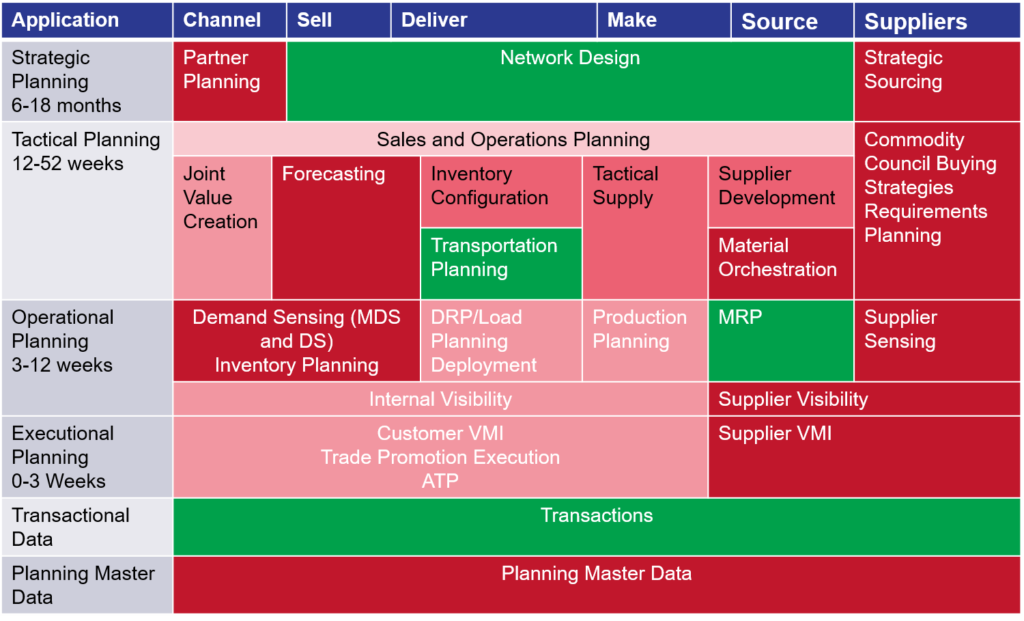During the spring I get to spend a lot of time in airplanes attending and speaking at technology conferences . I have done this for a decade. However, this year is different. I feel more disruption in the air.
. I have done this for a decade. However, this year is different. I feel more disruption in the air.
There is a confluence of factors. The technology market for new Enterprise Resource Planning (ERP) is drying up. Excess ERP consultants line the bench. With the evolution of cognitive learning, cloud-based analytics, nonrelational technologies, and streaming architectures, the ERP vendors are no longer the centerpiece of supply chain visionaries’ discussions.
In parallel, the drivers for Business Process Outsourcing (BPO) are evaporating. With rising labor rates in Asia, the drivers for Indian IT services are in question. While Indian outsourcing firms established themselves in the BPO markets, the focus was to serve the CIO. With 40-50% of IT spending controlled by the line-of-business leader, the Indian BPO firms lack the understanding of business processes to serve the business leader. We also see that manufacturing companies with a strong dependency on BPO are less agile and rate themselves lower on innovation.
Software maintenance costs are rising for the CIO. For the IT leader it is getting harder and harder to get new funds. In parallel, the traditional software vendors are struggling with the Innovators Dilemma. They must evolve existing platforms to continue to fund their solutions; but at the same time, they realize that they are not serving the greater need of the market to reinvent the supply chain. Stuck at the intersection of inventory turns and operating margins, nine out of ten companies struggle to improve balance sheet results. With the rise in complexity, most Supply Chain Metrics That Matter are going backwards (inventory turns, ROIC, operating margin and growth).
With the evolution of the cloud, in-memory processing, and advancements in analytics, the traditional definitions of technologies, consultants and analysts are shifting. New business models are evolving. Disintermediation is happening. A traditional consulting model is embracing cloud-based analytics, and traditional technology vendors are experimenting with BPO models. The traditional analyst models are being redefined.
Embrace New Business Models
When I was in high school, I was blessed with an amazing history teacher. Wanda Hughes taught me that we have better vision for the future by understanding the past. She also taught me to never forget that we are living history. In keeping with these principles, for those sorting through the changes in the technology market, here I share my lessons learned from fifteen years of market coverage:
- Consulting companies should not sell software. Consulting and software are very different business models. A technology company is focused on building and evolving products while consulting companies hone service delivery models. They are very different. Avoid buying software from a consulting company.
- Technology leadership and consulting leadership are different skill sets. I know of no technology company that has successfully evolved under the leadership of a consulting leader. I also struggle to find a consulting company that is successfully evolving under the leadership of a technology leader. The models and prerequisite leadership qualities are very different. When there is a change in leadership, be suspicious. Trust, but verify the direction over time.
- Partnerships drive little value. I struggle to find a partnership in the software space that drove long-term value. While there are many press releases, solutions defined by partnerships lack the ability to stand the test of time. Do not buy software based on partnerships.
- Open Source needs maintenance. With the evolution of open source software, be sure that the solution you are purchasing can be maintained and evolved over time. Ask tough questions to make sure the solution can be maintained by the company selling the solution. For example, if you are buying Hadoop solutions be sure to verify the number of committers (write-back to the code base). While many consulting partners are offering open source Hadoop solutions, be sure that it is maintainable.
- Expect disruption to happen on the outside. The fast lane to innovation is with new startups. Technology innovation happens from the outside, typically not inside technology (product-based) companies. The definitions of existing software models are a barrier to reinvent based on technology possibilities. As a result, most companies are painting within the lines of existing supply chain software boxes (traditional definitions), not redefining new solutions. The strategy is to milk maintenance revenues. In conference after conference that I attend, I find technology companies building a new user interface on top of old technologies. When I see this I hang my head. I feel like this is analogous to putting lipstick on the pig. Most companies have implemented pieces of supply chain planning and execution software. Why? The maturity of current architectures as deployed is spotty. Companies operate heterogeneous IT environments with complex deployments of regional and divisional software. (Many were defined by the original limitations in supply chain software.) In figure 1 we share a maturity assessment for a manufacturing company. We have never analyzed a company with an architecture that has more green/maturity. Most of the implementations are functional and are evolving based on functional leadership.
Figure 1. A Sample Planning Maturity Map

Here I share my POV. I look forward to hearing yours.
We will keep you posted on our progress.
About Lora:
 Lora Cecere is the Founder of Supply Chain Insights. She is trying to redefine the industry analyst model to make it friendlier and more useful for supply chain leaders. Lora has written the books Supply Chain Metrics That Matter and Bricks Matter, and is currently working on her third book, Leadership Matters. She also actively blogs on her Supply Chain Insights website, at the Supply Chain Shaman blog, and for Forbes. When not writing or running her company, Lora is training for a triathlon, taking classes for her DBA degree in research, knitting and quilting for her new granddaughter, and doing tendu(s) and Dégagé (s) to dome her feet for pointe work at the ballet barre. Lora thinks thinks that we are never too old to learn.
Lora Cecere is the Founder of Supply Chain Insights. She is trying to redefine the industry analyst model to make it friendlier and more useful for supply chain leaders. Lora has written the books Supply Chain Metrics That Matter and Bricks Matter, and is currently working on her third book, Leadership Matters. She also actively blogs on her Supply Chain Insights website, at the Supply Chain Shaman blog, and for Forbes. When not writing or running her company, Lora is training for a triathlon, taking classes for her DBA degree in research, knitting and quilting for her new granddaughter, and doing tendu(s) and Dégagé (s) to dome her feet for pointe work at the ballet barre. Lora thinks thinks that we are never too old to learn.







